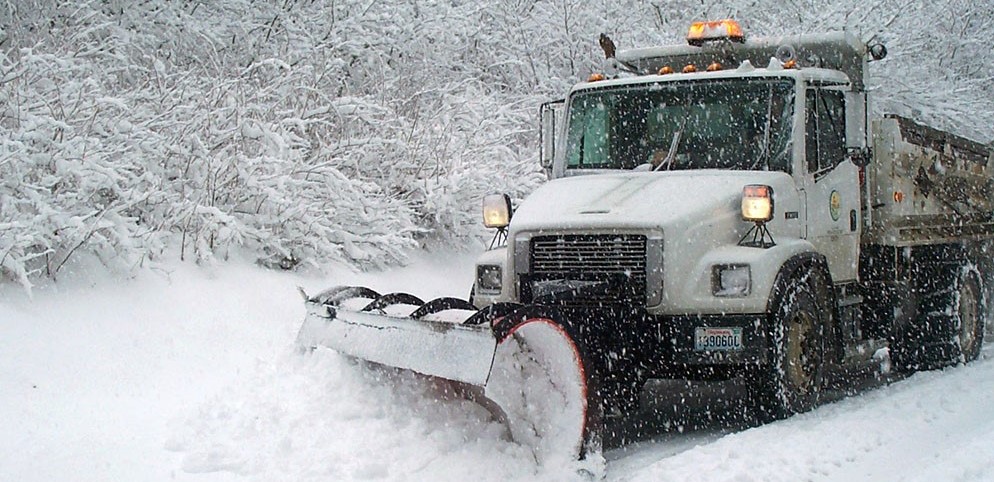Report urgent concerns: 564.397.2446. Learn More >
Feb. 13 winter weather closures, response
Northwest Allen Canyon Road from Northwest 51st Avenue to Northwest 324th Street and Northwest Pekin Ferry Road has REOPENED as of Feb. 18. (The road was closed 1:30 p.m., 2/13.)
When winter weather strikes, Clark County Public works is ready to respond! Our maintenance and operations crews are located at six “sheds” throughout the county, so we can respond quickly and efficiently to the unique conditions that may occur in different areas.
Clark County Public Works prioritizes arterials and collectors for plowing, sanding, and deicing. Arterials are the main roads that provide access to highways and freeways and are our top priority. Collectors are roads that provide access to arterials and are the second priority.
Before winter weather
Each fall, we prepare our staff and equipment so we’re ready to respond to whatever conditions winter weather brings to county roads. We:
- Inspect, test and tune up all vehicles and equipment
- Order salt, make brine and fill storage tanks
- Familiarize crews with their assigned response routes and equipment; we provide them with handheld response guides for their assigned area
- Monitor slide-prone areas to proactively prevent landslides
Each truck has a plow and will also have either a sander or deicer. In addition to snow and ice, each truck is prepared to respond to water over roadways, clogged catch basins, downed trees and branches, and similar weather-related issues.
